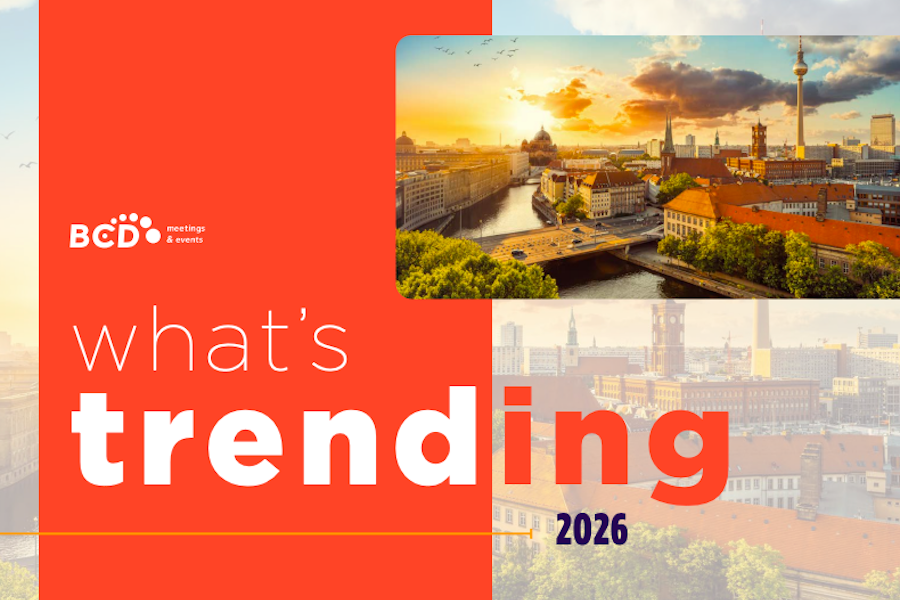As the meetings and events (M&E) sector looks ahead to 2026, BCD Meetings & Events’ latest What’s Trending report paints a picture of an industry adjusting to a new era of cost scrutiny, agility, and strategic focus.
Globally, economic uncertainty, restructuring across multinationals, and geopolitical tensions are weighing on confidence. Planners are entering the year with heightened caution and tighter budgets, but also with creativity and resilience.
“Doing “more with less” is the key mantra. Managing increased costs, especially for air fares and food & beverage (F&B), means budgets will continue to be stretched,” said Bruce Morgan, Global President of BCD M&E.
“Expect more consolidated spend as travel buyers look to manage more transient travel alongside M&E budgets— all in the name of efficiency. In the short term, any softness within markets represents an opportunity for negotiations, particularly on rates, for planners sourcing meetings.”
UK: Budget pressure meets experiential ambition
In the UK, rising supplier costs, driven by higher taxes, labour, utilities and F&B, are setting the stage for an even more budget-conscious 2026. With inflation still high and growth weak, planners face the challenge of bridging the gap between rising costs and static budgets.
“Managing expectations will be an increasing challenge. Something will have to give,” said Helen McCabe, Managing Director, UK, BCD M&E. She predicts consolidation ahead, meaning fewer meetings but a higher average spend per event, as companies focus on high-impact, agile and flexible formats.
She added: “There is also a trend toward creating more valued and immersive experiences in the UK as opposed to formulaic, traditional events. This is because planners increasingly question the value and impact of their M&E spend. B2B corporations are also more likely to adopt an experiential approach, which has traditionally been more prevalent with B2C.”
As London costs soar, secondary UK cities such as Manchester, Birmingham, Edinburgh and Liverpool are gaining ground. New infrastructure and large-capacity venues outside the capital are attracting more regional meetings, supported by a growing focus on sustainability, local sourcing, and tech-enabled delivery.
Strategic meetings management comes of age
The report underscores a pivotal shift: meetings are no longer just logistical exercises—they’re strategic investments. With the C-suite demanding measurable returns, 2026 will see tighter integration of procurement, finance, and marketing teams.
This scrutiny is fuelling consolidation, both of spend and suppliers, and prompting more holistic program management to eliminate silos and unlock efficiency. Internal meetings are also evolving, with corporates repurposing office space to host events and foster culture in a hybrid world.
Experience, technology and attention
Immersive experiences will be “table stakes” in 2026, with AI and behavioural science increasingly shaping engagement design. As Morgan notes, attention has become a scarce corporate resource, and investing in experiences that command it is worth the spend.
At the same time, Generative and Agentic AI are moving from experimentation to strategy, streamlining processes from sourcing to post-event analytics while freeing planners to focus on creativity and connection.
A year for agility and reinvention
With costs rising, decision cycles lengthening and expectations soaring, agility will be the watchword. Planners and suppliers who can pivot quickly, collaborate closely and innovate boldly will be best placed to thrive.
2026 will demand smarter, faster, more connected approaches, and those who can combine efficiency with creativity, balancing fiscal caution with experiential impact, will lead the next chapter of the industry’s evolution.
The full What’s Trending 2026 report is available via BCD Meetings & Events.

